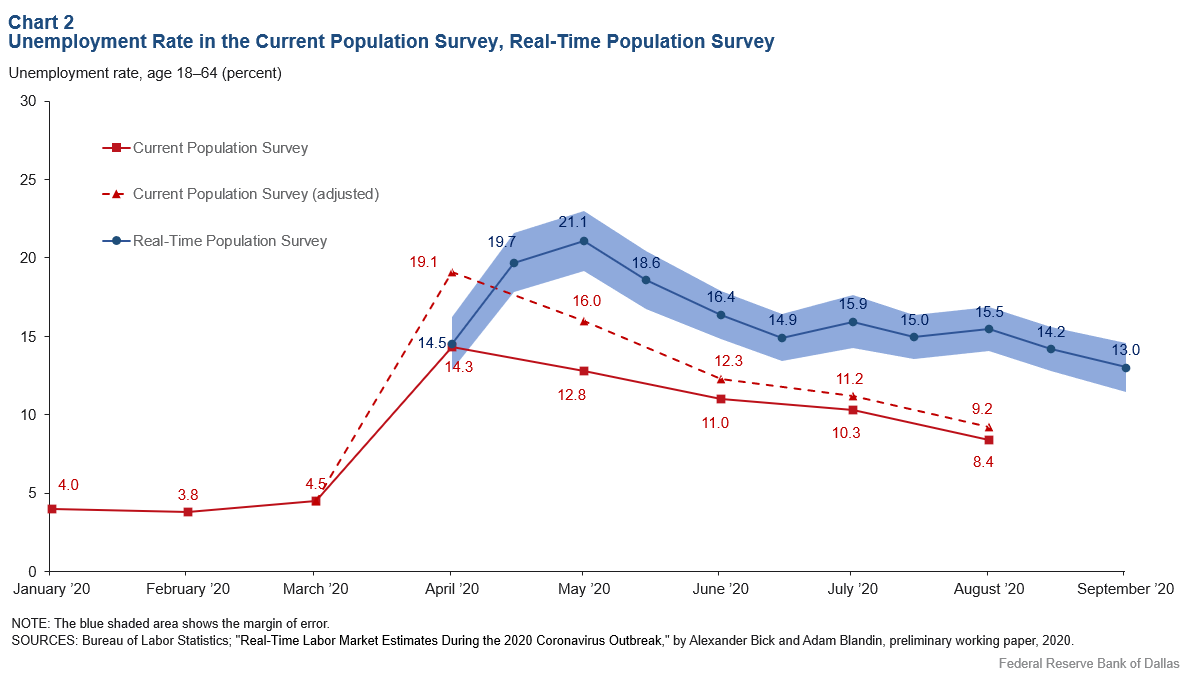
U.S. Economy
Real-Time Population Survey (RPS)
September 18, 2020
Employment Rate Rises in September
- The employment rate for working-age adults (18–64) was 64.5 percent in the RPS for the week of Sept. 6–12, an increase relative to the estimate of 62.4 percent for the week of Aug. 23–29.
- In mid-August, the RPS employment rate of 63.8 percent was below the most recent Current Population Survey (CPS) estimate of 69.0 percent for working-age adults (18–64). The Bureau of Labor Statistics, which draws on the CPS for its unemployment rate report, continued to report that some individuals “with a job but absent from work because of the coronavirus” were misclassified as employed during the CPS interviewing process.
In contrast, the RPS did not record an unusually high number of persons not at work, suggesting that the same misclassification did not occur in the RPS. Reclassifying the individuals absent from work in the CPS survey leads to an adjusted employment rate among working-age adults of 68.3 percent for the week of Aug. 9–15.

Unemployment Rate Decreases
- The unemployment rate in the RPS was 13.0 percent for Sept. 6–12, a decrease relative to the estimate of 14.2 percent for Aug. 23–29.
- In mid-August, the unemployment rate of 15.5 percent in the RPS exceeded the official CPS estimate of 8.4 percent for working-age adults (18–64) and was also above the alternate estimate of 9.2 percent after reclassifying those “absent from work because of the coronavirus’’ as unemployed

Labor Force Participation Increases
- The labor force participation rate was 74.1 percent in the RPS for Sept. 6–12, an increase relative to the estimate of 72.7 percent for Aug. 23–29.
- In mid-August, the RPS participation rate estimate of 75.5 percent was close the CPS estimate of 75.3 percent

RPS Authors
The RPS was developed by Alexander Bick, an associate professor at WP Carey School of Business at Arizona State University; Adam Blandin, an assistant professor in the Department of Economics at Virginia Commonwealth University; in collaboration with Karel Mertens, a senior economic policy advisor in the Research Department at the Federal Reserve Bank of Dallas.